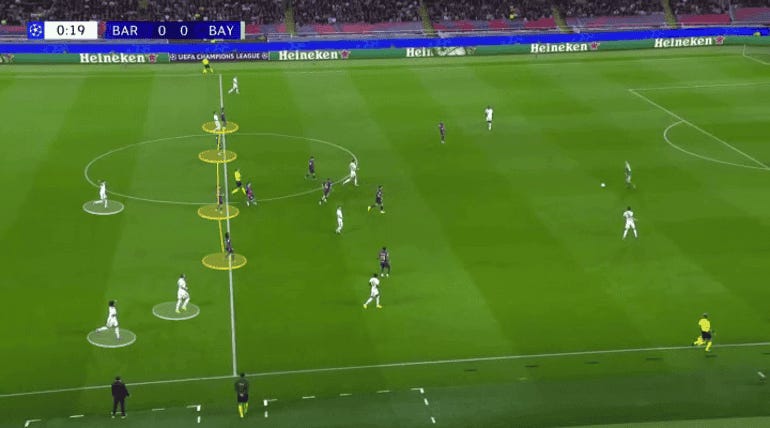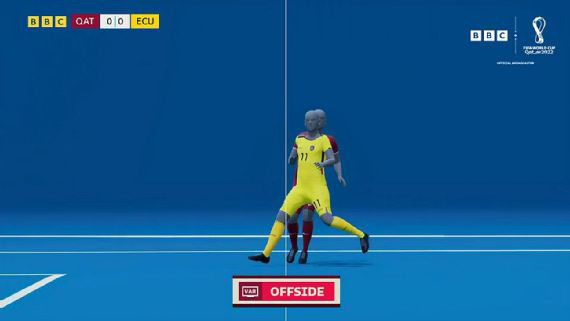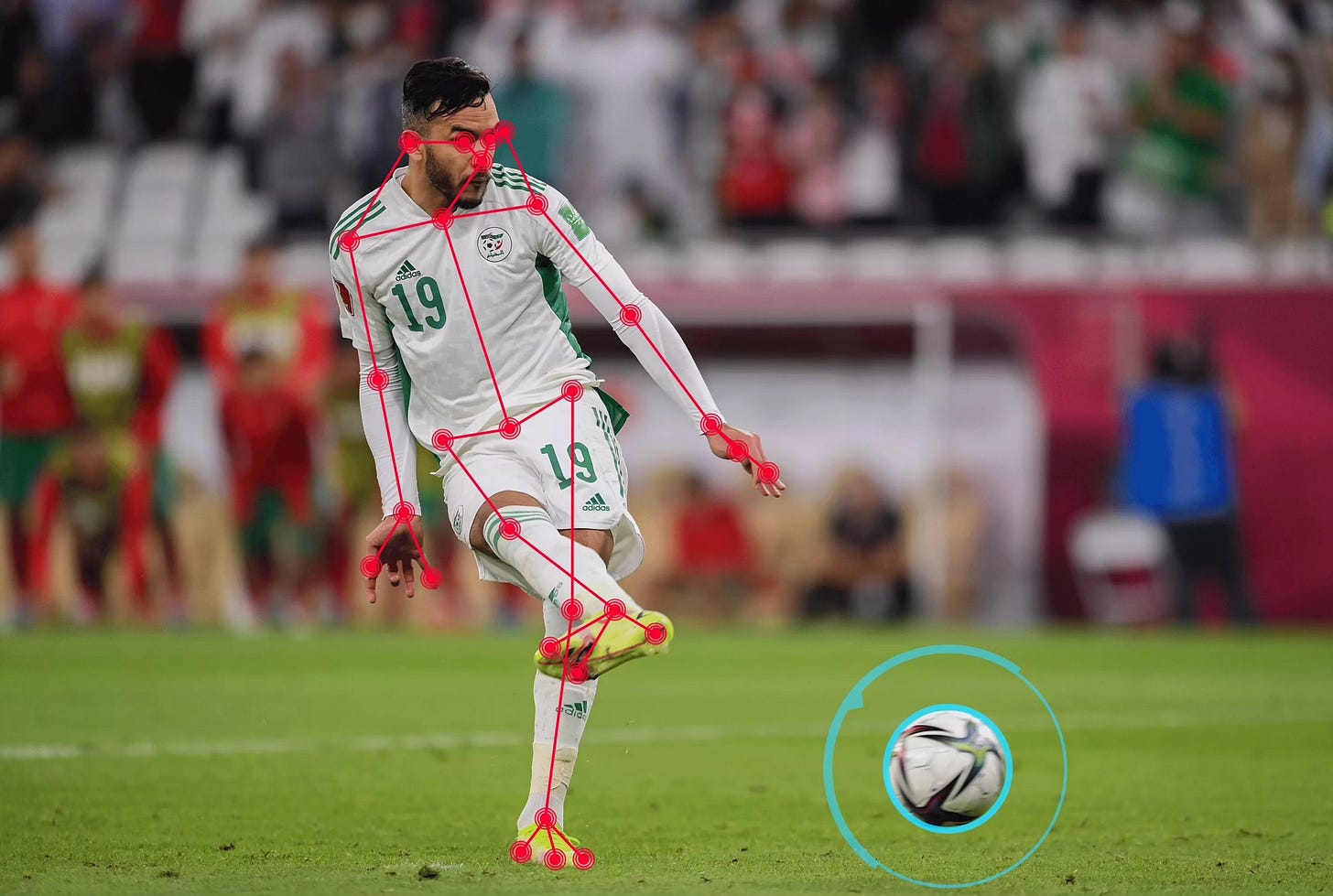If you haven’t noticed, I love football1. I am also a fan of FC Barcelona, even a club member. And now that I am living in Barcelona, I am a season card holder. So I’m watching a lot of football this year and enjoying it. Let me gloat for a second: my club is finally back after years of footballing and economic misery. Sure, we don’t have a penny, and who knows for how long we will still be a members-owned club. But the kids who are the backbone of this team make us feel something unique every time they come out and play2.
I could write about how this emotion of seeing Barcelona win playing attacking football, spearheaded by a 17-year-old miracle, defended by another 17-year-old miracle, and sustained by a midfield with players that average 22 years old. The kids are alright. But I want to capture this moment and praise Barcelona for winning like a game designer.
See, the key to Barcelona’s brilliance in October 2024 was using the offside trap in defense like a maniac3. Barcelona defends with their players on the midfield line, compressing the pitch space so intensely that physical pressing can be done with less effort and, therefore, less exhaustion. Once and again, opposing teams fall for the offside trap, and Barcelona succeeds at creating an intense, breathless symphony of attacks that seem never to stop. They are exhilarating and exhausting to watch. Who knows for how long they can keep it up? It’s gorgeous. It is also only possible because of technology.

I love the offside rule. I also have issues with the implementation of VAR in contemporary football. But seeing this Barcelona play has given me new insights into how football can be played and won from a game design perspective. Because the brilliance of this team is that they use the technology of semi-automated VAR as a gameplay resource to execute a game strategy. This technology is no longer a refereeing tool but a part of the game's mechanics. It’s a technology that has been adopted into the very fabric of the game, changing it towards something both resonant with tradition and novel4.
How does this work? Well, Barcelona knows that there is a technology that will unambiguously determine whether a player is offside, with a precision of centimeters. There is no more human error: even if a goal is scored against them, it will be revised and called off if the VAR referees see the report from the system describing an offside position. So, there is less risk attached to this crazy tactic. If performed correctly and combined with intense pressure on the ball carriers of the opposing team, this strategy breaks down many teams. It requires an elite understanding of the game, physicality, and coordination. But in October 2024, it worked beautifully and helped Barcelona amass unforgettable victories.

It is also a game designer approach to technology. Coaches are game designers who work with a found object, the game of football. I don’t want to get into the usual wars of what games are and are not, so let me be clear: the rules of football and all the material props needed for playing it are a game engine. The actual game design happens in the tactics and strategies put in place by coaches. I will die on this hill5.
The coach's job is to figure out what kind of game they want to play with football. Will it be a defensive game, low block, compact, denying the opponent, and waiting for a lucky strike? Will they await for a counter-attack, absorbing pressure? Or will they play attacking football? Here are dragons; it’s better to win 5-4 than 1-0. These strategic choices shape the game players play and watch. That is game design.
Like all forms of game design, it benefits from adopting technology to create playful experiences. Technology here can be as lowly as the ball, the boots, the goalkeeper gloves, as high-tech as GPS trackers, machine-learning-powered data visualizations, or the semi-automatic offside VAR.

Now, the brilliance of adopting semi-automatic VAR as part of the game’s design is that it uses a technology developed for refereeing and deploys it as a technology for playing. It’s a very smart appropriation: if a system has to be enforced to guarantee that all offsides will be caught, then that technology is part of how we design the game we want to play: high defensive line, high pressure, and an acceptable risk in setting up the offside trap.
Game design is, among other things, the art of appropriating technology to make games. Videogames are the current high point of this understanding of game design. At some moment, early in the history of computing machines, the idea of using this technology to create playable experiences took root, and new forms happened. For instance, role-playing games existed, but now they were both visual interactive worlds via text or 3D rendered graphics and single-player.
To design games, one often adopts technology that makes possible novel configurations of old forms of play. FC Barcelona, coach Flick, and his team have appropriated semi-automated VAR to create new football modes. In the next few months, we will find other coaches adopting tactics and strategies to beat this game, and maybe, or maybe not, we will see a revolution in football equal to that of Cruyff’s positional play. In the meantime, we should all enjoy good game design in sports.
Since I am a game scholar6, I want to make a more significant argument about this observation. Adopting technologies to create novel games is not new. Even board games can give us examples, like legacy games reinterpreting classics like Risk and Pandemic and creating arguably new games. But reflecting on this adoption of the high-tech semi-automated VAR made me think, of all things, about the PlayStation Pro.
What a machine! So many pixels, so many straight rays casting themselves, so much frames per second! What a wonder! And yet … what are we doing with it? More visually impressive interactive movie-wannabes? Or maybe I’m just not getting it? It seems that videogames, probably because of the pressures of having to feed millions to the parasitic executives who run the studios and the publishers, have given up on creatively engaging with “pro” technology. Ray tracing is not necessarily about “better graphics.” Maybe more frames per second can be used for something else than another sad dad wholesome murder simulator?
We need, or what I want, is the FC Barcelona of game technology7. I like the games that see these technological advances not as tools for recreating crusty old games we’ve already played to death, but to rethink games, what they are and what they can be.
Maybe not all of these crazy experiments will get it right or will be successful. Perhaps they will break down, and they will lead us nowhere. Maybe FC Barcelona won’t win anything this season. But what matters is not winning, the Hall of Fame, or the IGF awards. What matters is what we try to do with technology because we can, because we play with it. That’s game design, and when done right, it is as exhilarating as a good football match, a theatre play, or a concert.
Soccer, for the infidels.
I should mention there is nothing like the collective dream of a football stadium, theater play, or a music concert… the art we experience together is why we are alive.
Life and this post are too short to really explain the offside trap. A good place to start is reading Law XI of the game of football, and then maybe watch this video, and then this one.
Incredibly, FIFA is good for something: this is a great quick summary of how semi-automated offside technology works.
Or change my mind, who knows ¯\_(ツ)_/¯
And quite an arrogant one, to boot.
And don’t tell me it’s not possible or I’ll lock you in a room until you play Blue Suburbia.


Great post as always, really enjoy reading these.
I have a hard time with all this new technology in football, but it is mainly because it takes the immediate joy away from when someone scores - you are just waiting for VAR to pop up.
And it also makes the assistant referee (linesman) not call out clear offsides, in order to keep the game going, so they can call it back, if the linesman was incorrect in his decision.
Which creates this mistrust in the game you are watching, that everything is malleable.
The worst example for me, was Germany vs. Denmark in the Euros this year, the weirdest game I have ever seen (and not just because of the crazy rain and thunder).
Danmark scores, but it gets pulled back because of semi-automated offside, that can only be seen with technology. 2 minutes later, unintentional handball in the penalty box seen by using handball technology. Penalty to Germany and the rest is history.
Both decisions are technically correct, but no human eye could see it and it makes you question, both the rules of offside and handball in the penalty box.
Anyway, I too enjoy FC. Barcelona, it is nice to see they are finally back and Lamine Yamal is just a joy to watch.
Also I have heard that they are experimenting with VAR Challenges, like in Tennis, so you have a certain amount of challenges you can take in a game. Which I find very exciting and a lot more playful than what we currently have.
Lastly I have stopped caring about what technology Sony and Microsoft puts out and how they use it, but I still have high hopes for Nintendo to surprise me - they are the FC Barcelona of game technology ;)